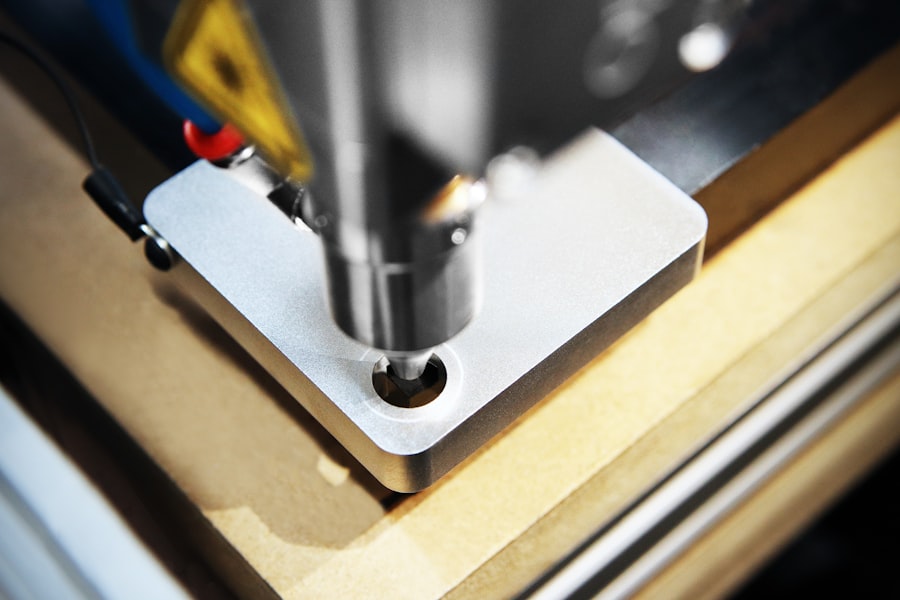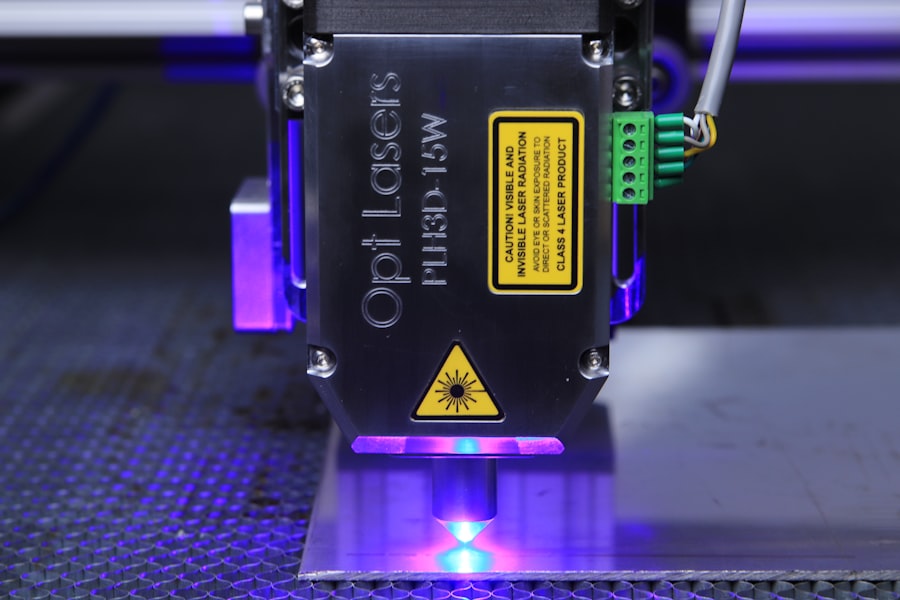Laser hair removal is a popular cosmetic procedure that utilizes concentrated beams of light to target and eliminate unwanted hair. The technology behind this treatment is based on the principle of selective photothermolysis, where the laser emits a specific wavelength of light that is absorbed by the pigment in the hair follicles. This absorption generates heat, which damages the follicles and inhibits future hair growth.
As you consider this option, it’s essential to understand how it works and what makes it an effective choice for many individuals seeking a long-term solution to hair removal. The procedure is most effective on individuals with light skin and dark hair, as the contrast allows the laser to target the pigment more effectively. However, advancements in technology have made it possible for people with various skin tones and hair colors to benefit from laser hair removal.
It’s important to note that while laser hair removal can significantly reduce hair growth, it may not guarantee complete and permanent hair removal for everyone. Multiple sessions are typically required to achieve optimal results, as hair grows in different cycles, and the laser is most effective on hair in the active growth phase.
Key Takeaways
- Laser hair removal uses concentrated light to target and destroy hair follicles, resulting in long-term hair reduction.
- Before your laser hair removal treatment, it’s important to avoid sun exposure and certain hair removal methods to ensure the best results.
- When choosing a laser hair removal clinic or spa, consider the qualifications and experience of the staff, as well as the type of laser technology used.
- During the treatment, you can expect some discomfort, but most people find it tolerable and the procedure is relatively quick.
- Aftercare for laser hair removal includes protecting your skin from the sun and avoiding certain skincare products to prevent irritation.
Preparing for Laser Hair Removal Treatment
Preparation is key to ensuring a successful laser hair removal experience. Before your first appointment, you should schedule a consultation with a qualified practitioner who can assess your skin type, hair color, and overall suitability for the procedure. During this consultation, you will discuss your medical history, any medications you are taking, and your expectations for the treatment.
This step is crucial as it helps the practitioner tailor the treatment plan to your specific needs and ensures that you are a good candidate for the procedure. In the weeks leading up to your treatment, there are several important steps you should take to prepare your skin. First, avoid sun exposure and tanning beds, as tanned skin can increase the risk of complications during the procedure.
Additionally, refrain from waxing or plucking hair in the treatment area for at least four weeks prior to your appointment, as these methods can remove the hair follicle that the laser targets. Instead, shaving is recommended, as it leaves the follicle intact while allowing the laser to effectively penetrate the skin. Following these guidelines will help maximize the effectiveness of your treatment and minimize potential side effects.
Choosing the Right Laser Hair Removal Clinic or Spa

Selecting a reputable clinic or spa for your laser hair removal treatment is crucial to achieving safe and effective results. Start by researching facilities in your area and reading reviews from previous clients. Look for clinics that specialize in laser hair removal and have experienced practitioners who are certified in this field.
It’s also beneficial to seek recommendations from friends or family members who have undergone similar treatments, as personal experiences can provide valuable insights into the quality of care offered. When visiting potential clinics, pay attention to the cleanliness and professionalism of the environment. A well-maintained facility with knowledgeable staff will give you confidence in their ability to provide safe treatments.
Don’t hesitate to ask questions about the types of lasers used, the experience of the technicians, and what safety measures are in place. A reputable clinic will be transparent about their procedures and will take the time to address any concerns you may have before proceeding with treatment.
What to Expect During Laser Hair Removal Treatment
| Aspect | Information |
|---|---|
| Treatment Duration | Each session typically lasts 15-60 minutes, depending on the size of the area being treated. |
| Number of Sessions | Most people need 6-8 sessions spaced 4-6 weeks apart for optimal results. |
| Pain Level | Many people describe the sensation as similar to a rubber band snapping against the skin. |
| Side Effects | Possible side effects include redness, swelling, and temporary pigment changes, but these usually subside within a few days. |
| Preparation | Avoid sun exposure and tanning beds before treatment, and shave the area to be treated the day before the session. |
On the day of your laser hair removal appointment, you can expect a straightforward process that typically lasts anywhere from a few minutes to an hour, depending on the size of the treatment area. Before starting, your practitioner will likely apply a topical anesthetic to minimize any discomfort during the procedure. You may also be given protective eyewear to shield your eyes from the laser light.
Once you’re prepared, the practitioner will use a handheld device to deliver laser pulses to the targeted areas. As the laser is applied, you may feel a sensation similar to a rubber band snapping against your skin. While some individuals report minimal discomfort, others may find it slightly more intense depending on their pain tolerance and the sensitivity of the area being treated.
The practitioner will continuously monitor your comfort level throughout the session and may adjust settings as needed. After completing the treatment, you may notice some redness or swelling in the treated area, but these effects typically subside within a few hours.
Aftercare and Maintenance for Laser Hair Removal
After your laser hair removal session, proper aftercare is essential for ensuring optimal results and minimizing any potential side effects. Your practitioner will provide specific instructions tailored to your treatment area and skin type, but there are general guidelines you should follow. First and foremost, avoid sun exposure for at least two weeks following your treatment, as your skin will be more sensitive and susceptible to sunburn.
If you must be outdoors, apply a broad-spectrum sunscreen with a high SPF to protect your skin. Additionally, refrain from using harsh skincare products or engaging in activities that may irritate your skin, such as hot baths or vigorous exercise, for a few days post-treatment. You may also be advised to avoid certain medications or supplements that could increase sensitivity or risk of complications.
Staying hydrated and maintaining a healthy skincare routine will further support your skin’s recovery process and enhance the effectiveness of your laser hair removal results.
Potential Risks and Side Effects of Laser Hair Removal

While laser hair removal is generally considered safe, it’s important to be aware of potential risks and side effects associated with the procedure. Common side effects include temporary redness, swelling, or mild discomfort in the treated area, which usually resolves within a few hours or days. In some cases, individuals may experience changes in skin pigmentation, such as darkening or lightening of the skin in response to the laser treatment.
These effects are typically temporary but can be more pronounced in individuals with darker skin tones. More serious complications are rare but can occur if proper protocols are not followed or if an inexperienced practitioner performs the procedure. These complications may include blistering, scarring, or infection.
To minimize these risks, it’s crucial to choose a qualified clinic with experienced professionals who adhere to safety standards and best practices in laser hair removal.
Alternative Options to Laser Hair Removal
If you’re considering alternatives to laser hair removal, there are several options available that cater to different preferences and needs. One popular method is electrolysis, which involves using an electric current to destroy individual hair follicles. This technique is effective for all hair colors and skin types but can be time-consuming since each follicle must be treated separately.
Another alternative is intense pulsed light (IPL) therapy, which uses broad-spectrum light rather than a focused laser beam to target hair follicles. While IPL can be effective for some individuals, it may not provide results as quickly or effectively as traditional laser treatments. Additionally, there are various at-home hair removal devices available on the market that utilize light-based technology; however, these devices often yield less dramatic results compared to professional treatments.
Tips for Maximizing the Results of Laser Hair Removal
To ensure you achieve the best possible results from your laser hair removal treatments, there are several tips you can follow throughout your journey. First and foremost, adhere strictly to your treatment schedule as recommended by your practitioner. Consistency is key when it comes to maximizing results; missing appointments can lead to slower progress and less effective outcomes.
Additionally, maintain open communication with your practitioner regarding any changes in your skin or hair growth patterns between sessions. This feedback can help them adjust settings or techniques for future treatments to better suit your needs. Lastly, remember that patience is essential; while many individuals see significant results after just a few sessions, complete hair reduction may take time and multiple treatments before achieving desired outcomes.
In conclusion, understanding laser hair removal involves recognizing its benefits and limitations while preparing adequately for treatment and selecting a reputable clinic. By following proper aftercare guidelines and being aware of potential risks, you can enjoy smoother skin with reduced hair growth over time. Whether you choose laser hair removal or explore alternative options, informed decision-making will empower you on your journey toward achieving your desired aesthetic goals.
If you are interested in learning more about laser hair removal, you may want to check out this article on the latest fashion trends and how laser hair removal can complement your style. This article discusses how laser hair removal can enhance your overall look and boost your confidence. It provides valuable insights into how this treatment can be a game-changer for your fashion choices.
FAQs
What is laser hair removal?
Laser hair removal is a cosmetic procedure that uses a concentrated beam of light (laser) to remove unwanted hair. The laser targets the pigment in the hair follicle, damaging it and inhibiting future hair growth.
How does laser hair removal work?
During the procedure, the laser emits a light that is absorbed by the pigment in the hair follicles. This damages the follicle and inhibits future hair growth. Multiple sessions are usually required to achieve long-term hair reduction.
Is laser hair removal permanent?
Laser hair removal can lead to long-term hair reduction, but it is not always permanent. Some hair may grow back, but it is often finer and lighter in color. Maintenance sessions may be needed to sustain the results.
What areas of the body can be treated with laser hair removal?
Laser hair removal can be used to treat unwanted hair on various areas of the body, including the face, legs, arms, underarms, bikini line, and back. It is important to consult with a qualified professional to determine the best approach for each specific area.
Is laser hair removal safe?
When performed by a qualified and experienced professional, laser hair removal is generally considered safe. However, there are potential risks and side effects, such as skin irritation, redness, and changes in skin pigmentation. It is important to discuss any concerns with a healthcare provider before undergoing the procedure.





